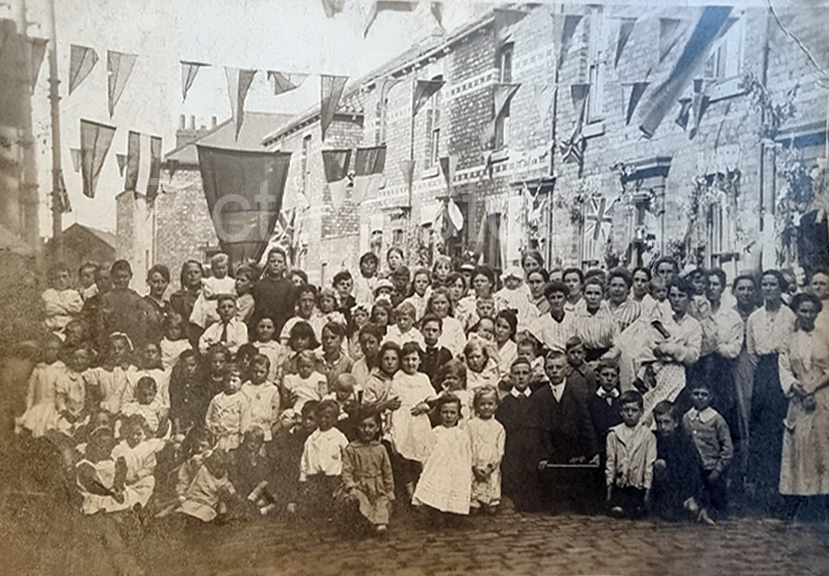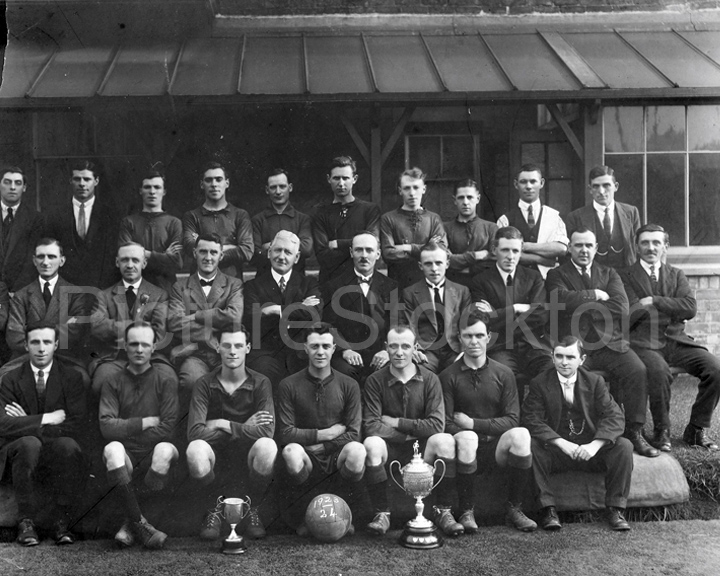This photograph was taken in Bridge Road, but the reason for the people gathered together is unknown. Can anyone help?
Photograph courtesy of Anon.


My father played in this football team, but unfortunately he can’t remember the name of the team or what year it was. The only people he remembers start right in the centre of the back row with Steve Strachan, the four before that are unknown then after Steve are Keith Daley, unknown Eric Jones, Norman Bellerby, unknown. First row Tommy Mustard, Derek Overton. Sadly the rest won’t come to him. Can anyone help?
Photograph and details courtesy of Anne Bellerby.

Anderston Foundries occupied a massive site next to the railway track in Port Clarence on the north/east side of the Transporter Bridge. These two adverts were in the railways section of an old Engineering Handbook. They show that the foundry produced a good range of rail track equipment, including crossings and points.


Not surprisingly, the overseas market is highlighted in the main advert. In this country, with the introduction of welded track and reinforced concrete sleepers, the steel sleeper, rail chair and fishplate market was disappearing. Nevertheless, the Anderston Foundry were doing the right thing in having an office in Victoria Street, London. No distance from Westminster Abbey.
Images courtesy of Fred Starr.
I wonder how many copies of the Stockton Darlington: one hundred and fifty years of British Railways book are still around, which was published in 1975 to commemorate the 150th Anniversary of the Stockton and Darlington Railway? Only recently did I realise that it was written by Peter Semmens, who worked at ICI Billingham. He joined ICI in the early 1950s after doing chemistry at Oxford University. He left Billingham in the 1970s for a senior position at the newly formed National Rail Museum at York. But while on Teesside he set up the local branch of the “British Association for Young Scientists”. Some people must remember him. He must have been quite a dynamic personality.
Peter was an avid enthusiast for the railways, and was one of the four people behind the formation of the National Rail Museum. As such he was more than a train spotter. He contributed many articles to Railway Magazine on the timings of express trains on the East Coast line and was an adviser on the Channel Tunnel. His book on the Stockton and Darlington is more technical than it looks. More important is “How Steam Locomotives Really Work” which Peter wrote in conjunction with Alan Goldfinch, who had been Chief Mechanical and Electrical Engineer in the Eastern Region of British Railways.
Photograph and details courtesy of Fred Starr.

Stockton Malleable Institute Football team, season 1923 – 24 in which they won both the Stockton and Thornaby Nursing Cup and The Teesside League Championship. The names of the team are:
Back row: J. Purcifer, R. Goldsbrough, T. Spacey, W. Boiston, H. Hutchinson, C Atkinson.
Front row: A. Davies, G. Perry, F. Higgins (?) , E. Laskey, R. Nichol.
Photograph and details courtesy of Cliff Thornton.

A photograph of one of the so-called ‘west villas’ (there are 5 in total) located on Oxbridge Lane directly opposite to the Cemetery. They are all similarly sized, very large semi-detached houses. Note that these houses also have very large gardens at the rear.
Photograph and details courtesy of MF Wilson.
